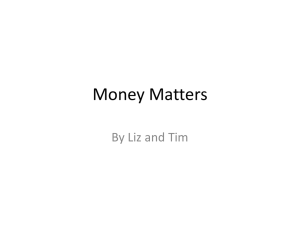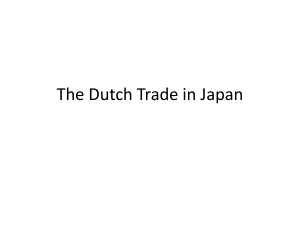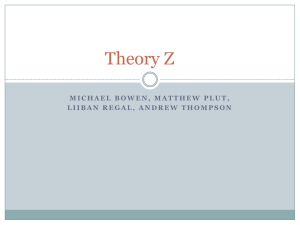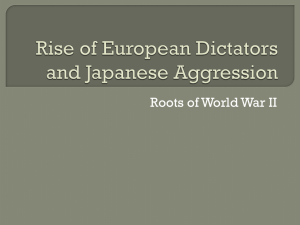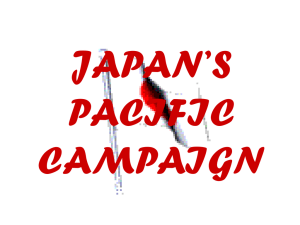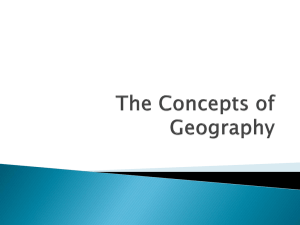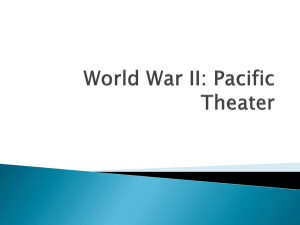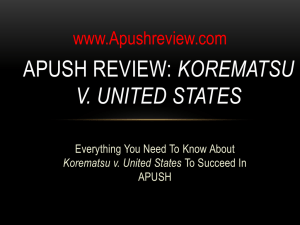Lecture Slides
advertisement
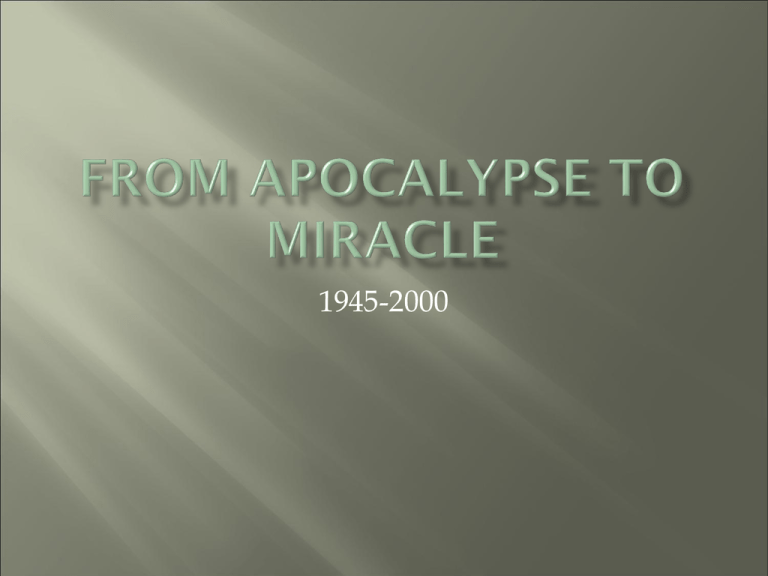
1945-2000 The mushroom cloud over Hiroshima is a representative image of Japan’s catastrophic defeat in the Pacific War….. Came into office 1948. Former diplomat and antiCommunist. 1951 signing of the Peace Treaty at SanFrancisco U.S. – Japan Security Treaty Signed Korean War acted as major stimulus to the Japanese economy – Yoshida called it ‘the gift from the Gods’. Fear of economic recession. May 1954: Yoshida agreed to set up SelfDefence Forces – an army, navy and air force in all but name – with a maximum of 150,000 men. December 1954 forced out of office. Japan paid price politically and diplomatically. U.S. refused to allow Japan to trade with PRC 1954 growth of strong pacifist movement centred on Hiroshima. Stories of the hibakusha became heard. Lucky Dragon incident causes concern about nuclear testing Japanese popular culture: Godzilla and Barefoot Gen ‘No’ to revision of Clause 9 November 1955: Socialists re-established previously banned Japanese Socialist Party (JSP). Prompted merger of conservative parties into LDP. LDP ruled uninterrupted until 1993 with the JSP as the main opposition party. 1990s amid corruption scandals and demands for reform, conservatives alligned with JSP to break LDP monopoly. July 1993 coalition of oppositions parties led by PM Hosokawa. 1994 coalition collapsed. Replaced by LDP-SDP coalition, led by the Socialist Murayama Tomiichi. 1996 a government headed by Hashimoto Ryutaro without socialists. Japanese politics failed to stabilise due to economic situation. 1997 economy tipped once more into recession. 1960 Kishi Nobusuke attempted to revise the security treaty. Signed in Washington in January 1960. May 1960: JSP tried to obstruct ratification in Lower House of the Diet. Kishi removed 500 JSP demonstrators and treaty was ratified and became law. 24th June 1960 Kishi resigned. Ikeda created new consensus by rebuilding the dialogue with the JSP Aimed to double Japan’s national income by the end of the new decade. Vital turning point in Japanese history. Emphasis on economic growth set policies for next three decades. 1960s economy grew at an average rate of 10.4% per annum, overtaking France, Britain and West Germany. Tariffs used to protect nascent Japanese industries. Good practices such as quality control were diffused. Companies encouraged to disseminate technology and patents. Public and private capital made available to favoured industrial sectors. Removal of protective barriers lead to huge increase in Japan’s exports. 1964 Tokyo Olympics signified Japan’s acceptance into the international community once more. Ralph Hewins The Japanese Miracle Men (1967) P. B Stone Japan Surges Ahead: The Story of an Economic Miracle (1969) Robert Guillain, The Japanese Challenge (1970) Herman Kahn The Emerging Japanese Superstate (1970) Hakan Hedberg, Japan’s Revenge (1972) Ezra Vogel Japan as Number One: Lessons for Americans (1979) Chalmers Johnson MITI and the Japanese “Miracle”. (1982) Four main explanations The national character explanation The no-miracle-occurred explanation The unique structural features analysis The free-ride theory Gross national product: 1951-53 = 100 1934-36 = 90 1961-63 = 248 1971-73 = 664 Index of manufacturing production: 1951-53 = 100 1934-36 = 87 1961-63 = 400 1971-73 = 1,350 Over the whole postwar period the Japanese economy increased 55-fold. Treaty revision taken to extreme by novelist Mishima Yukio. 25 November 1970 commited suicide Jietai (self-defence forces) HQ. 1972-1993 Japan become a major player in international politics due to economic power. Inspiration to the newly industrialising states in Asia. Admitted into the G7 Emerged as the largest provider of foreign aid to the Third World. Trade friction with the United States Japan’s trade surpluses with the US and the European Community spiralled out of control. Late 1980s countries urged tougher action against Japanese exports. 1950 – Itai-Itai (lit. ouch-ouch) – cadmium poisoning 1956 – Small town of Minamata reported an outbreak of mercury poisoning 1961 – Asthma in Yokkaichi 1965 – Mercury poisoning in Niigata Minamata victim 1964 Sato Eisaku won election on environmental promise. 1967 Basic Law for Environmental Pollution Control - criticised as little more than a symbolic gesture. Rise of citizen protest groups President nixon cited lack of pollution control as ‘an unfair trade advantage. U.S. National Environmental Protection Act provided model forJapan to follow. 1971 Establishment of the Environment Agency 1972 The Nature Conservation Law 1974 Pollution-related Health Damage Compensation Law: Allowed victims to claim compensation without recourse to law under certain circumstances. Early 1970s Japan’s consumption of oil accounted for 10.1% of the world’s total – twice that of Western Europe. 1973 – 73% of Japan’s primary energy supply was oil. 99.8% imported – 85% from OPEC countries. Price of oil from US $3 per barrel October 1973 to almost $12 per barrel in January 1974. GNP growth dropped to 0 in 1974. Resulted in a massive technological impetus in pollution abatement investment. Led to a massive restructuring of the Japanese economy. Heavy industry exported to Asian or Latin American countries where environmental regulations nonexistent. Japan accused of pollution and deforestation overseas 1985 Ministry of Finance eased control over the money supply. Increase in liquidity sparked wave of speculative investments in property and share values. Bubble economy of the late 1980: Value of shares traded on Japanese stock exchange between October 1987 and December 1989 increased by 120%. 1989-90 the bubble burst: Japanese banks and companies crippled by debt.

